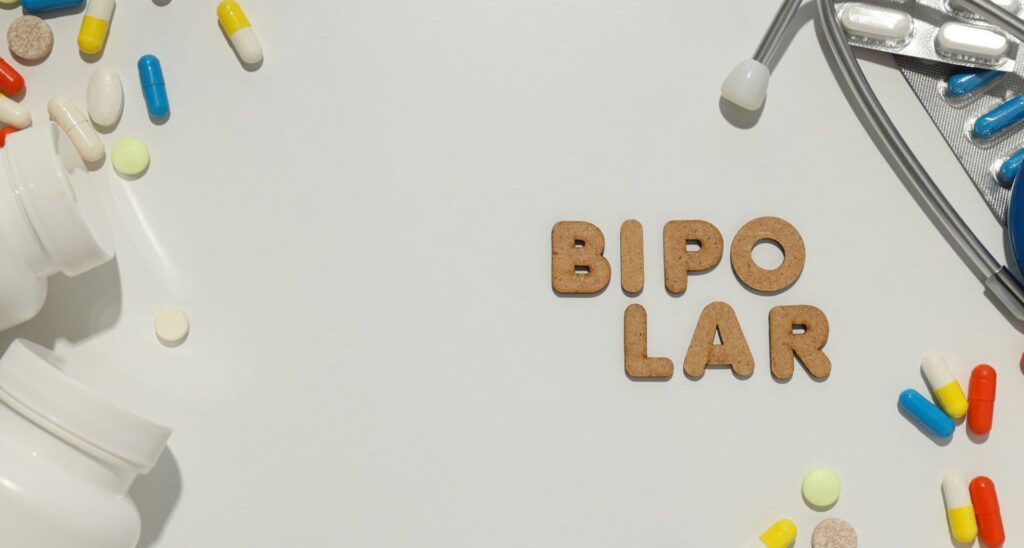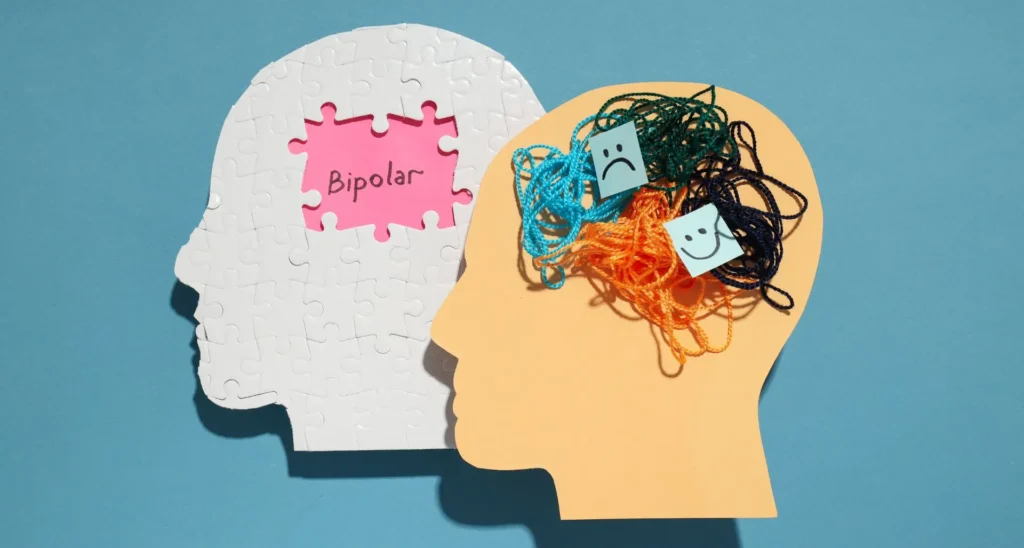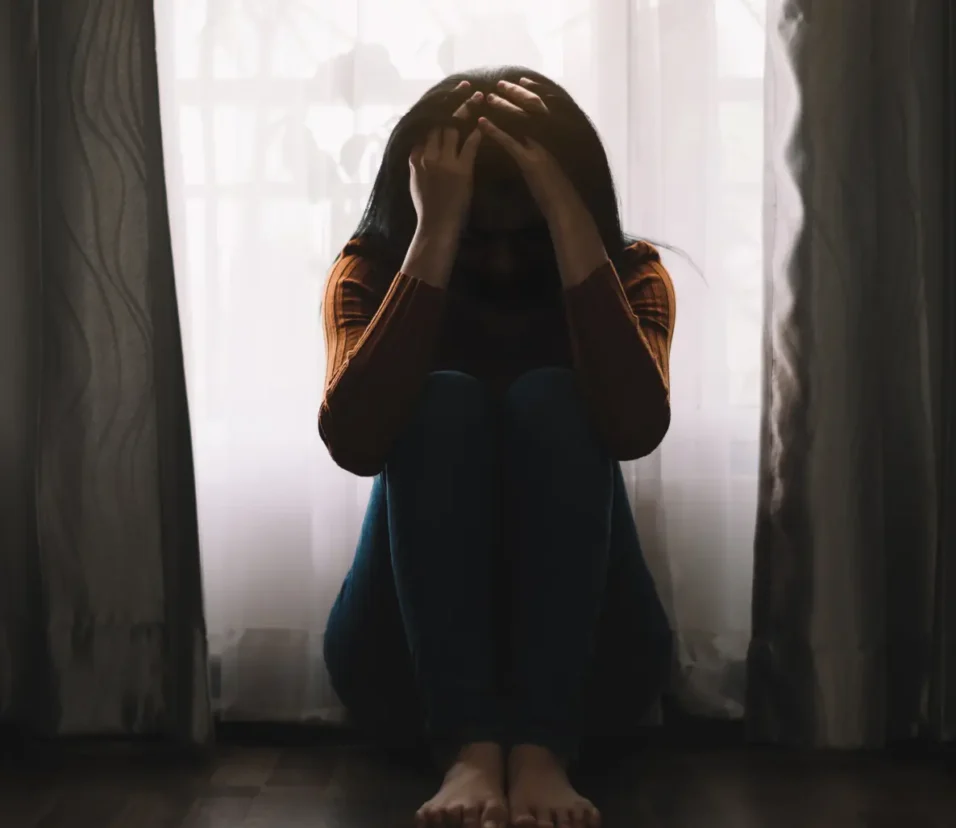Bipolar 1 vs Bipolar 2: Understanding the Differences and Similarities
Bipolar disorder is a mental health condition characterized by extreme mood swings that include emotional highs (mania or hypomania) and lows (depression). There are two main types of bipolar disorder: Bipolar I and Bipolar II. In both types, individuals experience episodes of mania or hypomania, which are elevated mood states, as well as episodes of depression. However, the severity and duration of these episodes differ between the two types.
In this blog, we are going to discuss bipolar 1 vs bipolar 2 and explore their symptoms, diagnostic criteria, treatment options, and how they can affect individuals’ lives.
What are Bipolar I and Bipolar II?
Bipolar I and Bipolar II are two distinct subtypes of bipolar disorder, each characterized by unique patterns of mood swings. Bipolar I disorder involves experiencing manic episodes that last for at least seven days or are severe enough to require immediate medical attention. These manic episodes may be accompanied by depressive episodes, which can last for at least two weeks.
On the other hand, Bipolar II disorder involves experiencing hypomanic episodes, which are less severe than full-blown manic episodes, along with depressive episodes. Unlike Bipolar I, individuals with Bipolar II never experience full manic episodes. Understanding the differences between these two subtypes is crucial for accurate diagnosis and effective treatment planning.
Bipolar 1 VS 2
In comparing Bipolar I and Bipolar II disorders, it’s essential to grasp their distinctive features. Bipolar I entails full-blown manic episodes, often accompanied by depressive episodes of varying intensity.
Conversely, Bipolar II is characterized by hypomanic episodes alongside depressive episodes, without experiencing full manic episodes. Let’s explore the disparities between these two conditions further:
| Features | Bipolar I | Bipolar II |
| Manic Episodes | Presence of full-blown manic episodes lasting at least 7 days or requiring hospitalization | Hypomanic episodes, less severe than full mania, lasting at least 4 days |
| Depressive Episodes | Depressive episodes lasting at least 2 weeks, often alternating with manic episodes | Depressive episodes that meet the criteria for major depression, alternating with hypomanic episodes |
| Severity | Typically more severe due to intense manic episodes | Generally less severe, but can still significantly impact daily functioning |
What’s the Difference Between Bipolar 1 and Bipolar 2?

When considering the disparity between Bipolar I and Bipolar II disorders, it’s vital to discern the nuanced variations in their clinical presentation and impact on individuals’ lives.
Manic Episodes: Bipolar I involves full-blown manic episodes lasting at least 7 days, whereas Bipolar II entails hypomanic episodes lasting at least 4 days, which are less severe than full mania.
Depressive Episodes: While both types feature depressive episodes, those with Bipolar I tend to have longer and potentially more severe depressive episodes compared to Bipolar II.
Severity: Bipolar I disorder is generally considered more severe due to the intensity of manic episodes, often requiring hospitalization, whereas Bipolar II, though less severe, can still significantly impact daily functioning.
Risk of Psychosis: Individuals with Bipolar I have a higher risk of experiencing psychotic symptoms during manic episodes, such as delusions or hallucinations, whereas this risk is lower in Bipolar II.
Diagnostic Criteria: The diagnostic criteria for Bipolar I necessitate at least one manic episode, while Bipolar II requires at least one hypomanic episode and one major depressive episode.
Treatment Approach: Treatment approaches may vary slightly between the two types, with Bipolar I often requiring more aggressive management, including mood stabilizers, antipsychotic medications, and psychotherapy, while Bipolar II may respond well to mood stabilizers and antidepressants.
Impact on Daily Life: Bipolar I may have a more profound impact on various aspects of daily life, including relationships, work, and overall functioning, due to the severity of manic episodes, whereas Bipolar II may present with milder disruptions.
Risk of Suicide: Both types of bipolar disorder carry an increased risk of suicide, but individuals with Bipolar II may have a slightly higher risk due to the frequency and severity of depressive episodes.
How the Symptoms of Bipolar 1 VS Bipolar 2 are Different?

The main difference between Bipolar 1 and Bipolar 2 symptoms boils down to severity and episode type:
Mania vs. Hypomania:
Mania: A hallmark of Bipolar 1, manic episodes are intense and can significantly disrupt daily life. They involve:
- Extremely elevated mood or irritability
- Racing thoughts and speech
- Increased energy and activity levels (often to the point of restlessness)
- Decreased need for sleep
- Grandiosity (inflated sense of self-importance)
- Engaging in risky behaviors (spending sprees, impulsive decisions)
- Possible detachment from reality (psychosis)
Hypomania: In Bipolar 2, hypomania is a milder version of mania. People experience increased energy, mood, and activity levels, but not to the degree that disrupts their lives or causes psychosis.
Depressive Episodes:
Both Bipolar 1 and 2 can involve depressive episodes. These episodes can include:
- Feeling persistently sad or hopeless
- Loss of interest in pleasurable activities
- Significant changes in appetite or sleep
- Difficulty concentrating or making decisions
- Feelings of worthlessness or guilt
- Thoughts of death or suicide
Episode Duration:
- Manic episodes in Bipolar 1 typically last for at least a week, while hypomanic episodes in Bipolar 2 are shorter, lasting 4-7 days.
- Depressive episodes in both Bipolar 1 and 2 need to be present for at least two weeks to be considered a major depressive episode.
Impact:
- Manic episodes can be very disruptive to work, relationships, and finances.
- Hypomanic episodes, while still affecting mood and behavior, are usually less disruptive.
Overall
Bipolar 1 symptoms tend to be more extreme, with full-blown manic episodes and possible psychosis. Bipolar 2 involves hypomania, a milder manic state, but always includes depressive episodes.
What’s the Difference Between Bipolar I and II and Cyclothymia?
All three conditions, Bipolar 1, Bipolar 2, and Cyclothymia, involve mood swings, but they differ in severity and how long the episodes last. Here’s a breakdown:
Severity:
Bipolar 1: Most severe, with full manic episodes (extreme highs) and depressive episodes.
Bipolar 2: Less severe than Bipolar 1. Has hypomanic episodes (milder highs) and depressive episodes.
Cyclothymia: Mildest form. Experiences hypomanic and depressive symptoms, but not severe enough to meet the criteria for a full manic or depressive episode.
Episode Length:
Bipolar 1 & 2: Manic/Hypomanic episodes last at least a week, and depressive episodes last at least two weeks.
Cyclothymia: Mood swings happen frequently, but each episode is shorter, lasting days, or even within the same day.
Here’s a table for a quick comparison:
| Feature | Bipolar 1 | Bipolar 2 | Cyclothymia |
| Manic Episode | Severe | Hypomanic (milder) | Hypomanic symptoms (not full episode) |
| Depressive Episode | May or may not occur | Always occurs | Depressive symptoms (not full episode) |
| Episode Length | Weeks | Weeks | Days or shorter |
| Overall Impact | Highly disruptive | Can be disruptive | Subtle, may cause interpersonal problems |
How do Doctors Diagnose Bipolar 1 and 2?
Diagnosing Bipolar 1 and 2 involves a multi-step approach by a doctor or mental health professional. Here’s a breakdown of the typical process:
Mental Health Assessment:
- Detailed Interview: The doctor will ask you about your mood swings, including their severity, duration, and frequency. They’ll also inquire about sleep patterns, energy levels, activity levels, changes in appetite or weight, and thoughts of suicide or self-harm.
- Family History: They may ask about any family history of bipolar disorder, depression, or other mental health conditions.
Ruling Out Other Causes:
- Physical Exam: A physical exam can help rule out any underlying medical conditions that could be causing mood swings, such as thyroid problems or hormonal imbalances.
- Blood Tests: In some cases, blood tests may be done to check for thyroid function or rule out substance abuse that could be mimicking bipolar symptoms.
Diagnostic Criteria:
- The doctor will use the criteria outlined in the Diagnostic and Statistical Manual of Mental Disorders (DSM-5), published by the American Psychiatric Association, to diagnose Bipolar 1 or 2. The DSM-5 lists specific criteria for the duration, severity, and number of manic/hypomanic and depressive episodes required for diagnosis.
Additional Tools:
- Mood Questionnaires: Doctors may use standardized mood questionnaires to help them assess the severity and frequency of your mood swings. These questionnaires can provide a quantitative measure of your symptoms.
Considerations:
- Accuracy of Information: Since the diagnosis relies heavily on self-reported information, it’s important to be honest and detailed about your experiences.
- Partner/Family Input: Including a partner or close family member in the discussion can provide valuable insights into your behavior during mood episodes, especially if you have difficulty recalling details.
No Single Test:
- There is no single test that can definitively diagnose bipolar disorder. The diagnosis is based on a comprehensive evaluation of your symptoms and mental health history.
Importance of Early Diagnosis:
- An accurate diagnosis is crucial for developing an effective treatment plan. Bipolar disorder is a treatable condition, and early intervention can significantly improve quality of life.
If you think you or someone you know might have bipolar disorder, please reach out to a mental health professional for evaluation and support.
What is the Treatment for Bipolar Disorder I and II?
When it comes to treating Bipolar Disorder I and II, a comprehensive approach is essential for managing symptoms and promoting stability. Here’s an overview of the treatment options available:
Medication: Both types of bipolar disorder may benefit from mood stabilizers like lithium, anticonvulsants such as valproate or lamotrigine, and atypical antipsychotics like quetiapine or olanzapine.
Psychotherapy: Cognitive-behavioral therapy (CBT), interpersonal and social rhythm therapy (IPSRT), and family-focused therapy can help individuals understand and manage their symptoms, improve coping skills, and enhance communication within relationships.
Lifestyle Modifications: Regular exercise, adequate sleep, stress reduction techniques, and maintaining a consistent daily routine can complement medication and therapy in stabilizing mood and reducing the risk of relapse.
Support Groups: Joining support groups or participating in peer-led programs can provide individuals with bipolar disorder and their families with valuable emotional support, education, and encouragement.
Hospitalization: In severe cases, hospitalization may be necessary to ensure safety and stabilization during acute manic or depressive episodes.
Electroconvulsive Therapy (ECT): In some instances where medication and psychotherapy have been ineffective or poorly tolerated, ECT may be considered, particularly for severe depression or acute manic episodes.
Complementary and Alternative Therapies: While not a substitute for conventional treatment, some individuals find complementary approaches like acupuncture, mindfulness meditation, or dietary supplements to be helpful adjuncts to their overall treatment plan.
Regular Monitoring: Ongoing monitoring by healthcare professionals is crucial to assess treatment effectiveness, adjust medication dosages as needed, and address any emerging symptoms or side effects.
What is a Bipolar 2 Person Like?

Understanding what a person with Bipolar II disorder is like involves recognizing the fluctuating nature of their mood and energy levels. Individuals with Bipolar II often experience periods of hypomania, characterized by elevated mood, increased energy, and heightened creativity or productivity.
However, these episodes are less severe than those seen in Bipolar I and may go unnoticed or be mistaken for periods of high functioning. Conversely, they also endure depressive episodes, marked by persistent feelings of sadness, hopelessness, and fatigue, which can significantly impact their daily functioning and quality of life.
It’s essential to recognize that each person’s experience with Bipolar II is unique, and while they may face challenges, they also possess strengths, resilience, and the capacity for growth and recovery.
Which is Harder to Treat Bipolar 1 or 2?
There’s no simple answer to which type of bipolar disorder is harder to treat, Bipolar 1 or 2. Both present challenges, but they differ in nature.
Bipolar 1 Challenges:
- Manic episodes: These can be severe and require immediate intervention to prevent risky behavior or hospitalization. Finding the right medication combination to stabilize moods and prevent future episodes can be a challenge.
- Psychosis: Some manic episodes involve psychosis, which requires additional medication management.
- Adherence to treatment: Bipolar 1 may experience difficulty sticking to medication regimens, especially during manic episodes when they might feel invincible and not need treatment.
Bipolar 2 Challenges:
- Rapid cycling: Some people with Bipolar 2 experience rapid cycling, where mood swings happen frequently and quickly. This can be difficult to manage and requires close monitoring by a healthcare professional.
- Underdiagnosis: Bipolar 2 symptoms, particularly hypomania, can be subtle and sometimes mistaken for normal mood swings. This can lead to delayed diagnosis and treatment.
- Depression focus: The focus on treating depressive episodes, which are prominent in Bipolar 2, can overshadow the need for mood stabilizers to prevent hypomania.
Treatment Considerations:
- Individualized approach: Both Bipolar 1 and 2 require a personalized treatment plan based on the specific symptoms and their severity.
- Treatment goals: The goal of treatment is to achieve mood stability and improve overall quality of life.
- Effectiveness: Both Bipolar 1 and 2 can be effectively managed with a combination of medication and therapy.
If you or someone you know has Bipolar disorder, it’s important to consult a mental health professional for a proper diagnosis and discuss treatment options. With effective treatment and support, people with both Bipolar 1 and 2 can live fulfilling lives.
Ending Note
Understanding the nuances between Bipolar I and Bipolar II disorders is crucial for accurate diagnosis, effective treatment, and improved outcomes for individuals living with these conditions. While both types involve significant mood fluctuations, the severity and duration of manic and depressive episodes differ, impacting various aspects of daily life.
By recognizing the distinct features of each subtype and addressing them with a tailored approach combining medication, therapy, lifestyle modifications, and support, individuals with Bipolar I and Bipolar II can better manage their symptoms and lead fulfilling lives.















